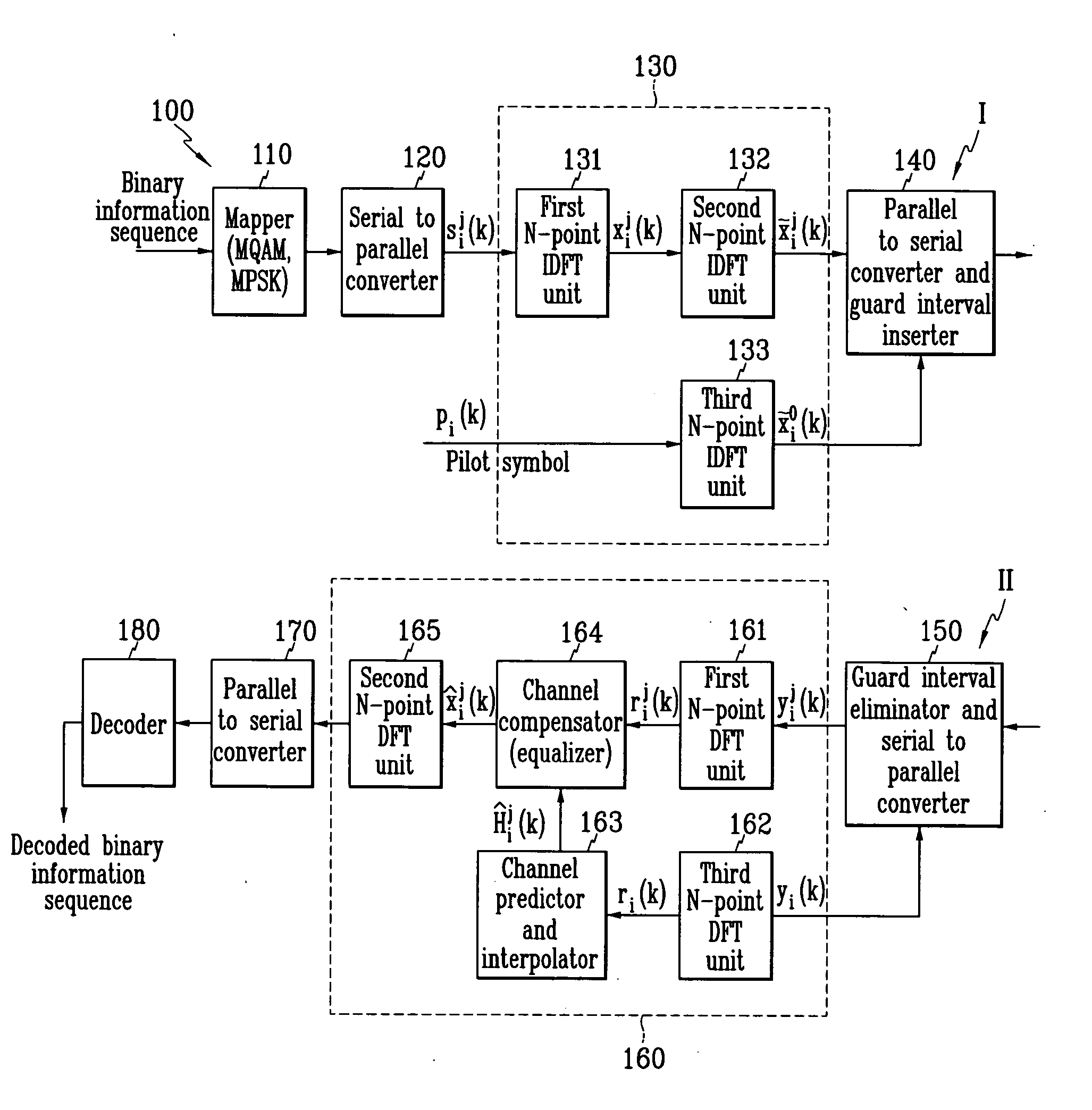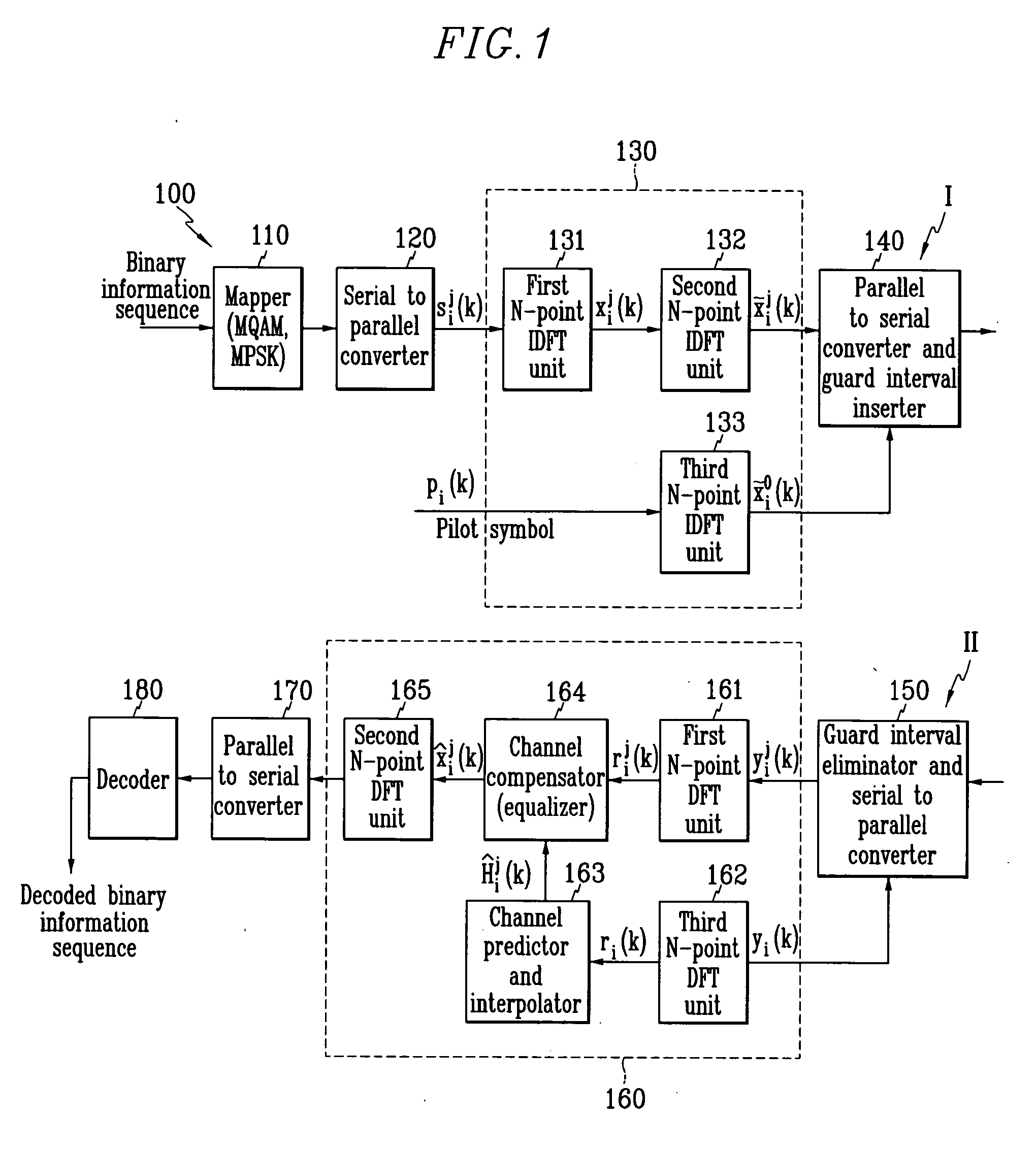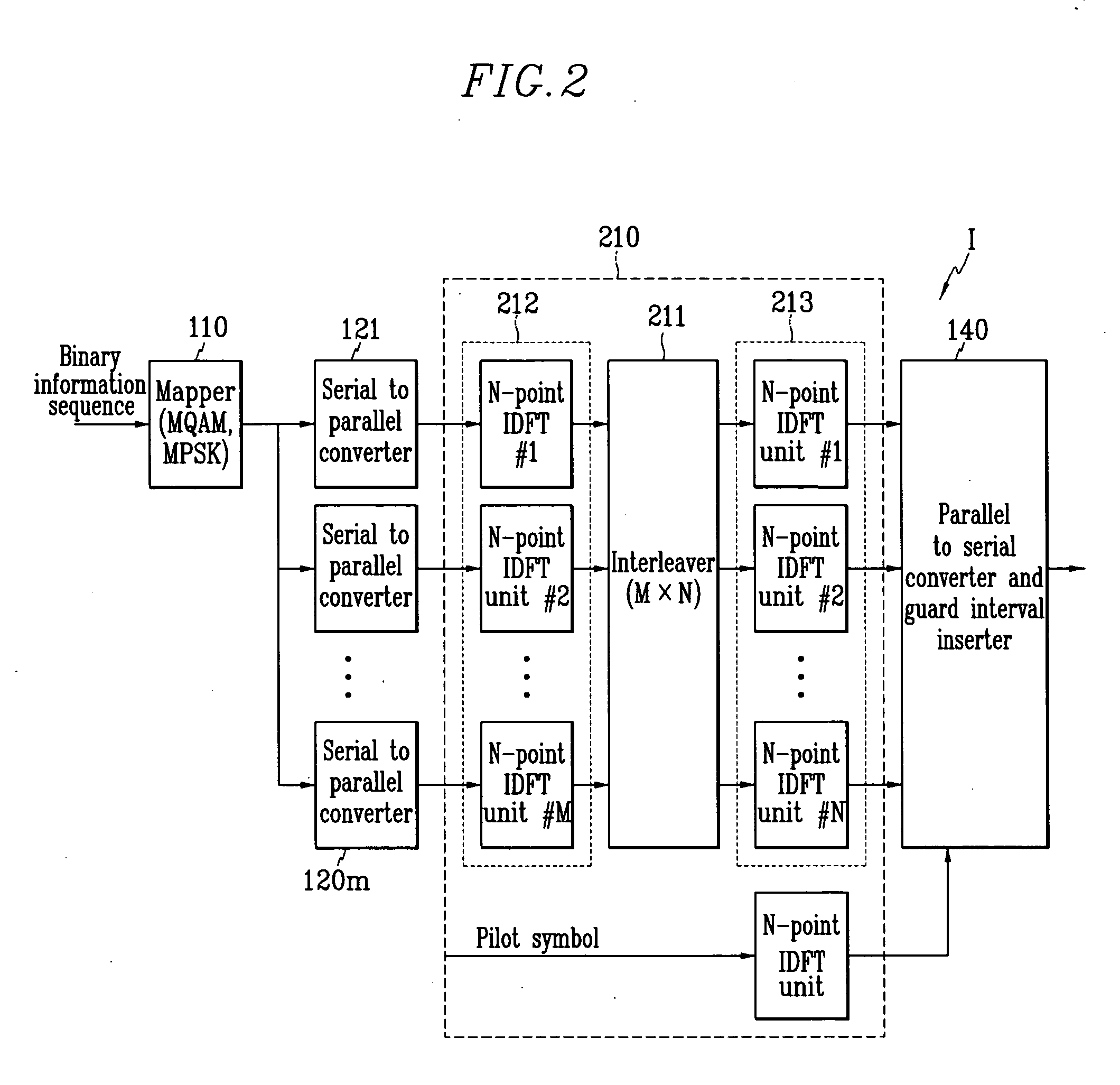Orthogonal frequency division multiplexing wireless communication operable on frequency selective channel, and channel compensation method
a wireless communication and selective channel technology, applied in orthogonal multiplex, wireless commuication services, baseband system details, etc., can solve the problems of increasing ber (bit error rate), steeply reducing channel amplitude, and reducing total performance caused, so as to improve total error rate, reduce ber, and double data rate
- Summary
- Abstract
- Description
- Claims
- Application Information
AI Technical Summary
Benefits of technology
Problems solved by technology
Method used
Image
Examples
sixth embodiment
The wireless communication system reduces hardwired complexity by eliminating the two IDFT units from the transmitter and the receiver differing from the first preferred embodiment.
When the MQAM (or MPSK) symbol vectors are modulated into OFDM signals through the IDFT unit, the amplitude of the modulated signal becomes relatively greater than the mean value, and when the amplitude is given in the PAR parameter format, and the PAR is great, an A / D (analog to digital) converter and a D / A (digital to analog) converter require high dynamic ranges which increase the costs and cause a clipping phenomenon in which a large part of the amplitude is cut off because of the backoff effect of a power amplifier, and the clipping phenomenon generates signal distortion and lowers system performance.
However, since the wireless communication system according to the fifth preferred embodiment uses no IDFT unit, no performance lowering because of the PAR is generated, and effective performance impr...
PUM
 Login to View More
Login to View More Abstract
Description
Claims
Application Information
 Login to View More
Login to View More - R&D
- Intellectual Property
- Life Sciences
- Materials
- Tech Scout
- Unparalleled Data Quality
- Higher Quality Content
- 60% Fewer Hallucinations
Browse by: Latest US Patents, China's latest patents, Technical Efficacy Thesaurus, Application Domain, Technology Topic, Popular Technical Reports.
© 2025 PatSnap. All rights reserved.Legal|Privacy policy|Modern Slavery Act Transparency Statement|Sitemap|About US| Contact US: help@patsnap.com



